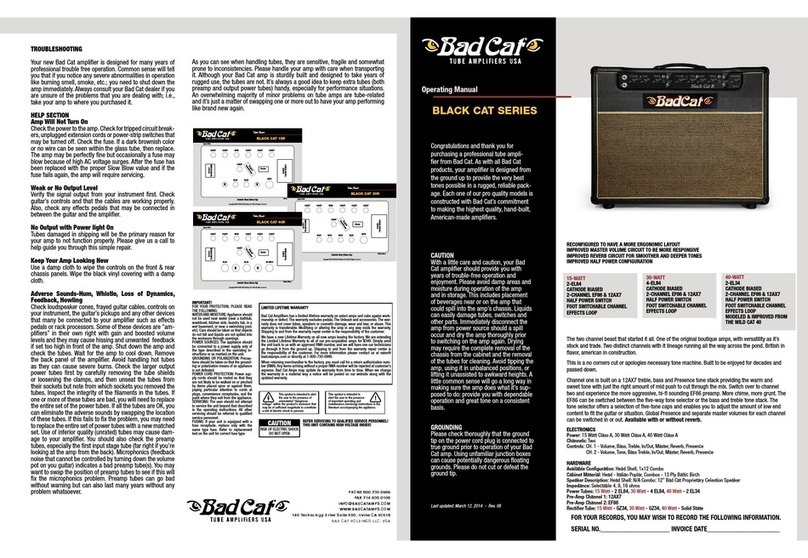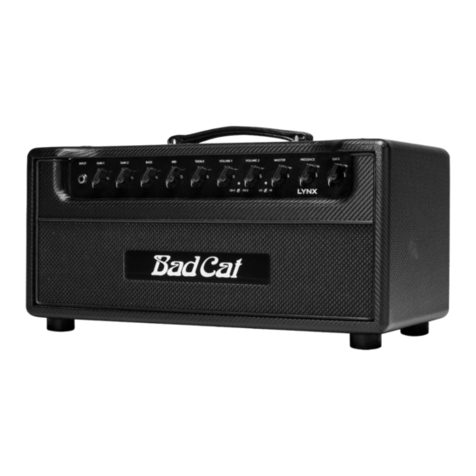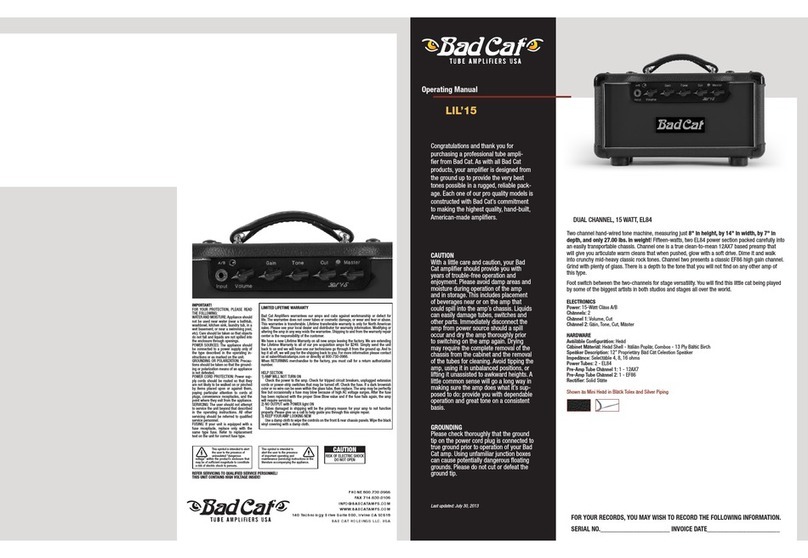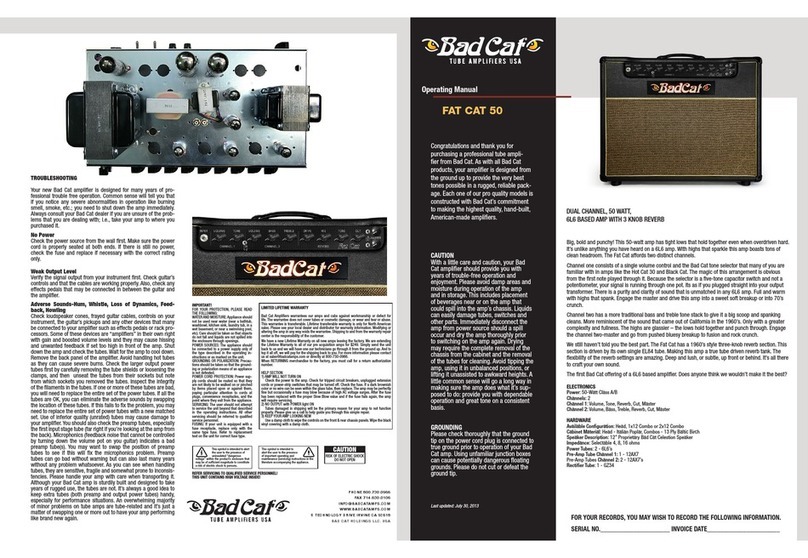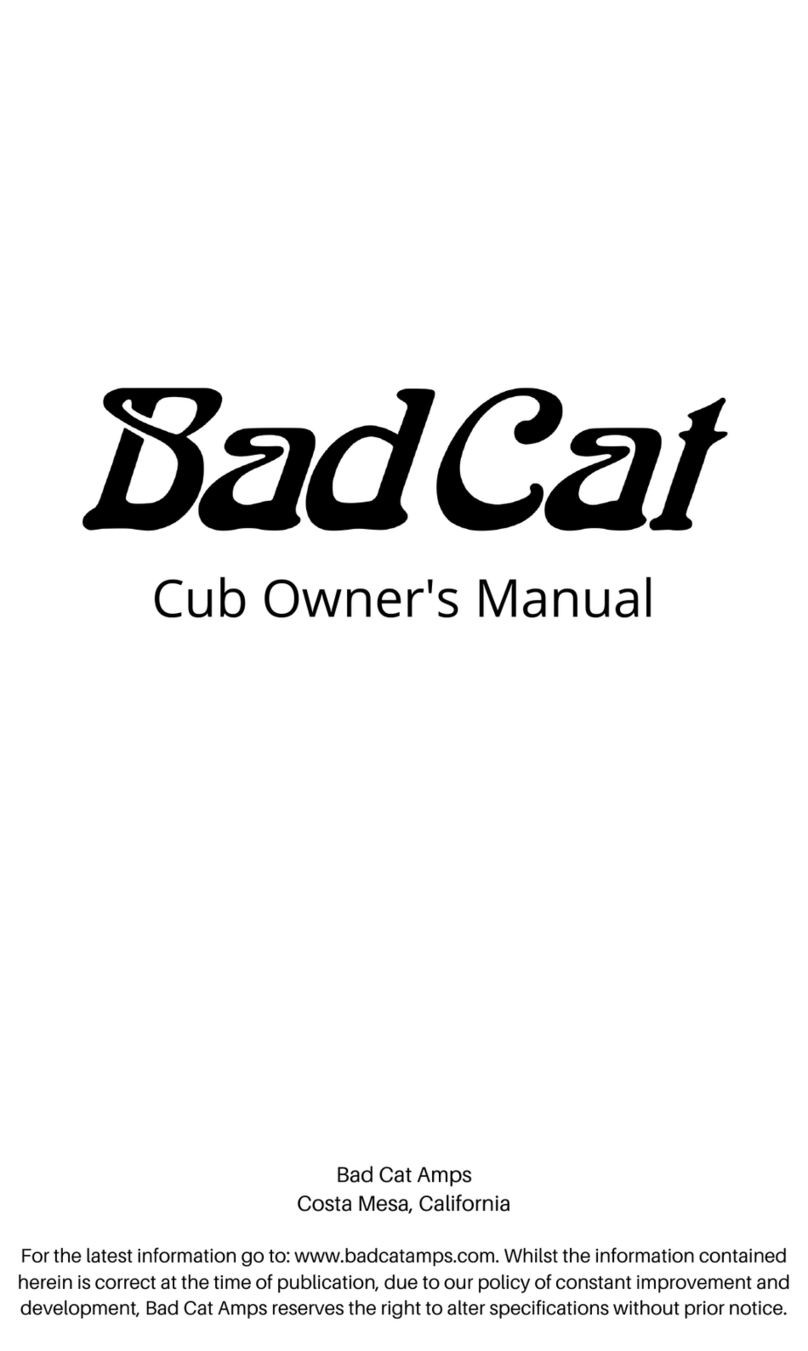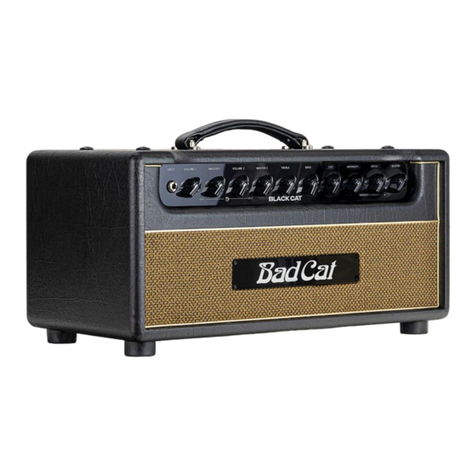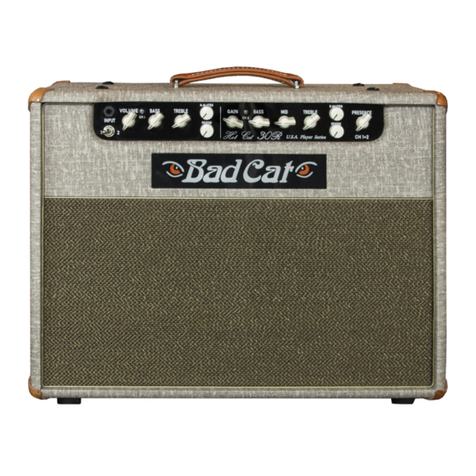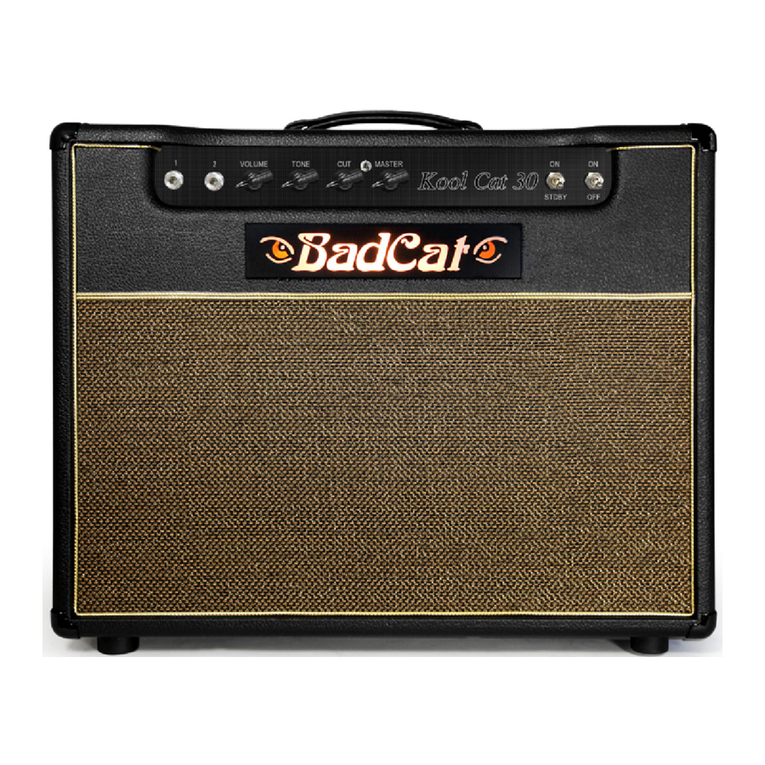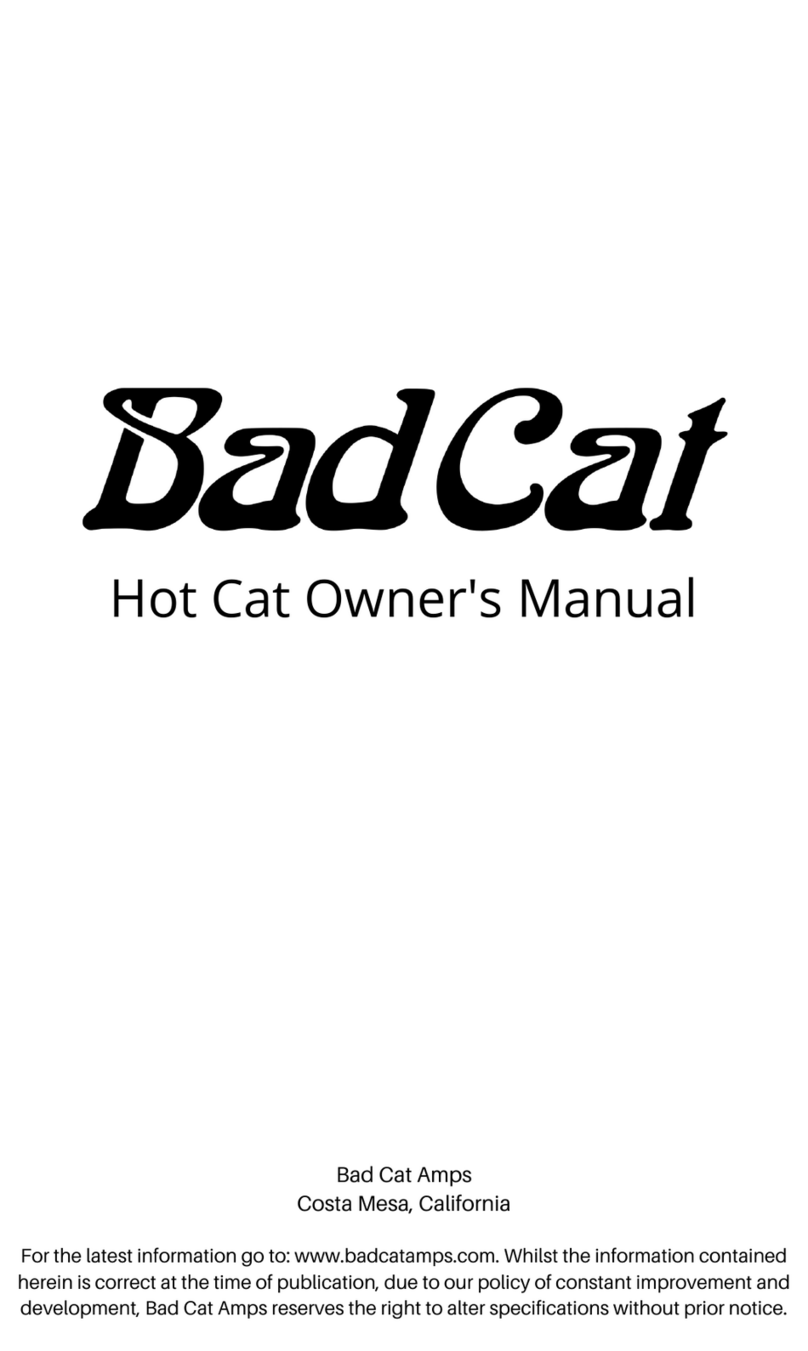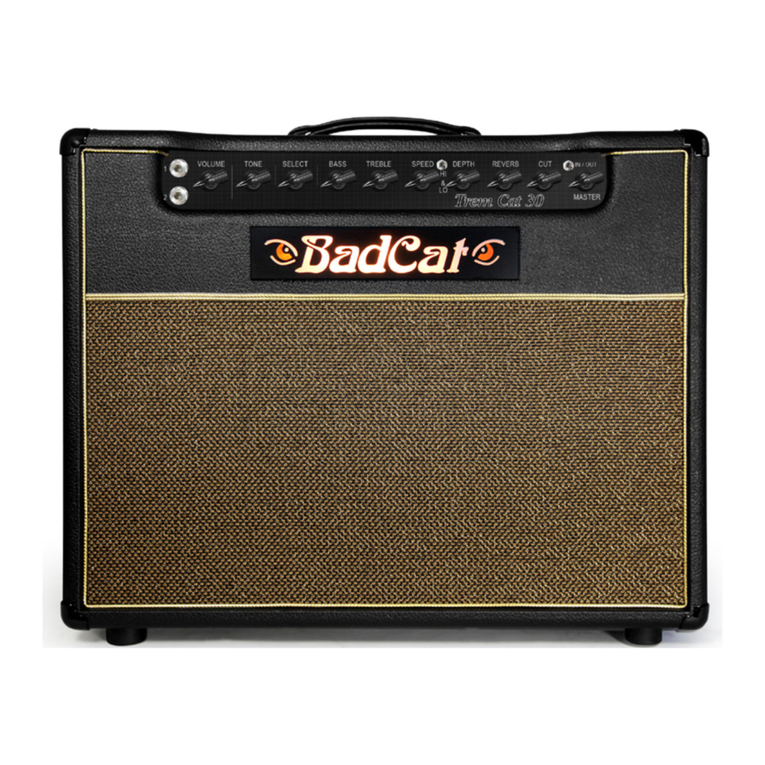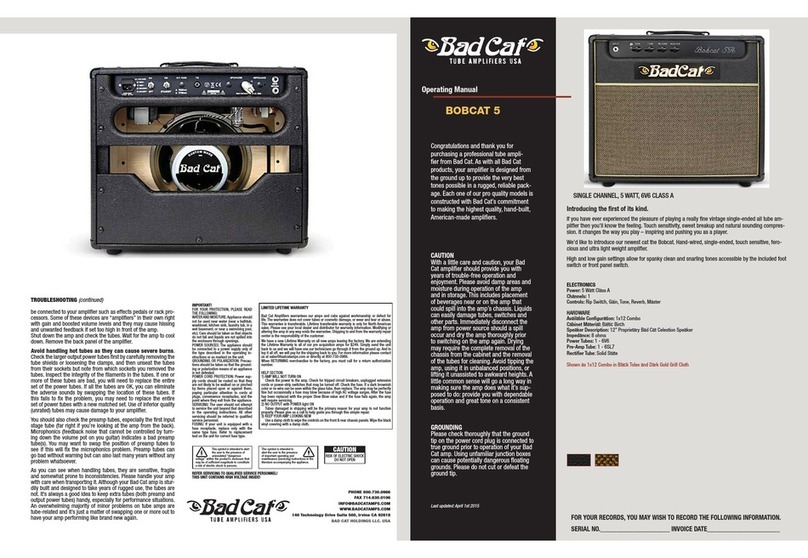Operation (continued)
1. Place the amp at least 6 inches away from any wall or obstacle to provide good ventilation
around the amp. Good airflow around the amp will go a long way in preventing the amp from
overheating, especially the tubes. Do not place covers, clothing, or any other materials on or
in the amp that can obstruct the free venting of the chassis to the outside air. Trapped heat in
the chassis may cause a condition known as thermal runaway. To put it simply, to warm or
cook the tubes is good, to heat-cycle or fry the tubes is extremely dangerous and will also
shorten the life of the tubes considerably.
2. Vacuum tubes will last longer and sound more musical when they are allowed to warm up
prior to introducing an input signal from your guitar. A full flow of electrons through the
cathode can only be achieved when the tube is heated. This requires some time. Please allow
at least a minute of warm-up time before playing trough the amp.
3. Avoid long idle periods with no input signal. The vacuum tubes prefer a signal load. When
taking a break between practice sessions or in between sets of a performance, use the standby
switch to leave it on standby or turn off the amp.
4. Avoid unverified impedance loads. In other words, do not clip on or otherwise attach
additional speakers unless you know the system impedance. Tube amplifiers are very
sensitive to speaker impedance matching. This is due to the relationship between the internal
resistances of the output transformer, the output power tubes and the load that is required to
drive them. Unbalanced loads can cause destructive self-oscillation; the transformer and the
tubes may actually burn out. This is not covered by our warranty.
With proper impedance matching, multiple speaker configurations will work fine. If you are
not familiar with ÒOhmÕs LawÓ, please consult with a dealer or a qualified amplifier
technician. Do not attempt to operate the amp if you cannot verify system impedance after
connecting the speakers. Never operate your Bad Cat amp at 2 ohms or less.
5. Avoid unapproved ÒPower SoakÓ devices or attenuators as these can shorten the life of your
power tubes considerably. Attenuators burn out tubes prematurely because they require the
power tubes to overwork continuously. Also, please note that power tubes are best replaced
as a matched full set whenever any of them fail.
Maintenance
Your Bad Cat amp is a professional instrument that does not require much in maintenance. Use a
clean dry cloth to wipe cabinet as required but avoid solvents of any type as they may tarnish or
discolor the vinyl. If youÕre going to store the amp with a cover, please allow the tubes to cool
before covering the amp. A cover cloth or vinyl amp cover will prevent dust buildup in the amp.
2
